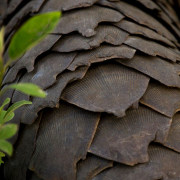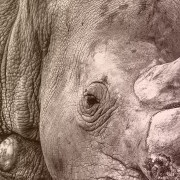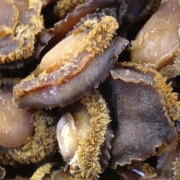|
Getting your Trinity Audio player ready...
|
Image: Wikimedia Commons
Despite growing awareness of and increasing measures against the illegal wildlife trade (IWT), it remains a serious global threat. This form of transnational organised crime, says the Wildlife Justice Commission, is estimated to generate at least US$20-billion in criminal proceeds each year, because it is largely low-risk and high-reward.
Like corruption, IWT is not a victimless crime, says a new report, launched in April 2025 and titled Dissecting the Environmental-Financial Crime Nexus: A Spotlight on the Illegal Wildlife Trade. The report is a collaboration between WWF-UK and Themis, an online platform which helps financial institutions to identify and manage specific crime risks relating to wildlife trafficking, slavery, environmental crimes, and others.
IWT contributes to the biodiversity crisis and has been linked to the spread of invasive species. It also perpetuates “animal cruelty, species population collapse, organised crime, corruption, and violence. It undermines good governance and the rule of law and leaches tax revenue from governments,” the report states.
In addition, it poses a serious hazard to public health. “The circulation of animal parts increases the chances of zoonotic disease transmission and can be a vector of pandemics.”
The UN Environment Programme says that 75% of all emerging infectious diseases over the past three decades are zoonotic – they originated in animals and transferred to humans. “Major drivers of biodiversity loss can contribute to the emergence and spread of zoonoses, from unsustainable land use practices such as deforestation, overgrazing, and water abstraction to the direct exploitation of nature, including through unsustainable or illegal wildlife trade.”
Financial crime
IWT often involves fraud schemes, tax evasion, and other serious crimes. This intersection between financial crime and environmental crime is thus an important one to consider and address. Like all proceeds of major crime, IWT money must be surreptitiously disposed of somehow, whether by laundering, supporting terrorist financing, buying luxury goods such as real estate, or stashing the ill-gotten gains in an offshore bank or overseas territory where secrecy is the name of the game.
Because money is often the motivator behind criminal or corrupt behaviour involving the environment, says the Countering Environmental Corruption Practitioners Forum, investigators can – by tracing the flow of money – uncover evidence that may be otherwise difficult to find. At an April 2025 meeting of the forum’s Follow-the-Money Working Group, participants discussed the role of financial intelligence in combating international wildlife trafficking and other environmental crimes.
“Financial investigations illuminate the people receiving and paying bribes, for example,” says the working group. “This can enable law enforcement authorities to trace, seize, and eventually confiscate the proceeds and instrumentalities of environmental crimes and corruption.”
Following the money can shine the spotlight on the high-level actors behind these crimes, and also reveal who finances and who profits from them.
The meeting started by introducing the report referred to above, as well as the Environmental Crimes Financial Toolkit (ECFT), which officially went live on 30 October 2024 at the COP16 conference held in Colombia. The ECFT, another online platform, aims to support financial institutions in assessing their risk exposure to financial crimes perpetrated through various natural commodities, and in addressing and reporting suspicious transactions relating to deforestation and land conversion. It currently focuses on Sub-Saharan Africa, South and Central America, and Southeast Asia and the Pacific.
Aimee Hanson, programme coordinator at WWF-UK, presented on the financial aspects of IWT. “Environmental crime very rarely happens in isolation. There’s often corruption, bribery, money laundering, human rights violations, other things that are happening alongside.”
Because of its complexity, IWT has many faces but is ultimately an economic crime. “Financial institutions face heightened exposure to environmental crime, whether it be directly or indirectly, and we feel that they have a key role to play in addressing not just IWT, but environmental crimes generally.”
WWF-UK has found that transactions relating to IWT or environmental crime are being processed through the normal banking system. “They can be seen, and at the moment, sometimes they’re not even being well hidden. So there are big, big gaps, but also major, major steps that we could take to rectify those gaps.”
Within the IWT report is a survey WWF-UK conducted with 829 financial service professionals in 22 countries. “We found that 40% of the respondents do not currently screen [their customers] for IWT. Even more surprisingly, 52% do not currently have a policy in relation to the illegal wildlife trade in place at their firm, and 50% do not have any internal training on IWT.”
Part of the survey involved asking financial institutions what would help them to address the illegal wildlife trade in their day-to-day work, and the most requested point was “guidance from the financial intelligence units or regulators. [Financial institutions] need something written in some form of regulation that helps drive that change, helps create their policies, helps shape their screening.”
South Africa’s natural resources under threat
South Africa is a country with immense natural resources, which makes it an attractive target for IWT and other forms of organised crime. We reported in February on a growing threat to South Africa’s indigenous plant species, discussing how rare and protected plants are spirited out of the country to collectors and the ornamental trade around the world, putting fragile ecosystems like the Succulent Karoo, a renowned biodiversity hotspot, at risk.
Succulent poaching features as a case study in the IWT report, as does poaching and laundering of South Africa’s valuable cycads. The report also discusses two investigations, in 2019 and 2021 respectively, into the trafficking of CITES-protected Sungazer lizards from the Northern Cape. These cases were linked via mobile phone analysis and financial transactions, and ultimately led to convictions for two German nationals and two South Africans, for wildlife trafficking and money laundering.
These cases, which are just a drop in the ocean, all highlight the danger in dismissing the little animals and plants and focusing on the high-profile, charismatic species such as elephants, rhinos, tigers, and pangolins.
While these latter species, says the report, “tend to dominate public concern and understanding of the illegal wildlife trade, plants and corals accounted for more seizures in 2020/21. Elephant and rhino seizures have, comparatively, declined significantly over the past five to 10 years.”
Since 2019, more than 1-million illegally harvested succulents representing 650 different species, including Conophytum, Lithops, and Tylecodon, have been seized during their transit through southern Africa, the report notes.
“In recognition of the critical biological importance of this region, the Critical Ecosystem Partnership Fund (supported by national and international government bodies) has developed an investment strategy for the Succulent Karoo biome, aiming to ensure sustainable use of the area.”
Cycad trafficking is another increasing threat to the country’s flora. “The ever-growing demand is often driven by wealthy plant collectors interested in planting rare cycads in their gardens – some of whom may misconceive their actions as ‘protecting’ these plants rather than contributing to their endangerment,” the IWT report says.
There is a legal market for cultivated cycad varieties, adds the report, but rare cycads are highly sought after. “Notably, every single cycad confiscated by police in the Eastern Cape province of South Africa was on the IUCN Red List, indicating a clear demand for endangered species.”
As with other forms of IWT, the financial rewards are high while the risk is relatively low. “With some plants fetching US$1 000 per seed, a plant no more than a metre high could be worth US$100 000 – the value of a decent-sized rhino horn,” says Africa Geographic. However, the poachers who are roped in to do the collecting never see anything remotely resembling these sums.
Other challenges
The IWT report names corruption as one of the main driving factors behind IWT. “Illegal activities such as IWT are enabled when there is a lack of appropriate governance and regulation … Regulatory gaps are further exacerbated by corruption in many cases, with a 2016 UNODC report arguing that corruption is the most important enabling factor behind IWT.”
South Africa has a particular challenge here, adds Themis in its risk report for the country, because the country’s economic and political environment has made it vulnerable to financial crime. “Weak regulatory enforcement and systemic corruption have allowed illicit activities to thrive. The country’s role as a regional financial hub further exacerbates these risks, attracting both domestic and international criminal enterprises.”
Corruption Watch has reported before on the convergence of wildlife crimes and other types of crime such as human trafficking, drug and weapons trafficking, and money laundering.
The Themis risk report names bribery and corruption, money laundering, cyber-crime, tax crime, environmental crime, and drug, weapons, and human trafficking, among others, as particular risks that South Africa must address.







